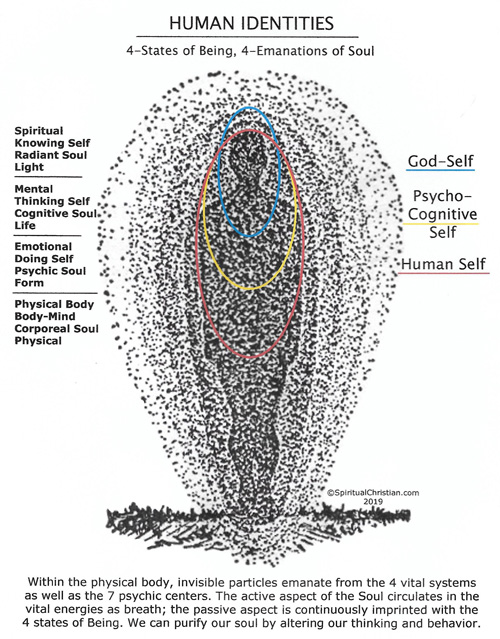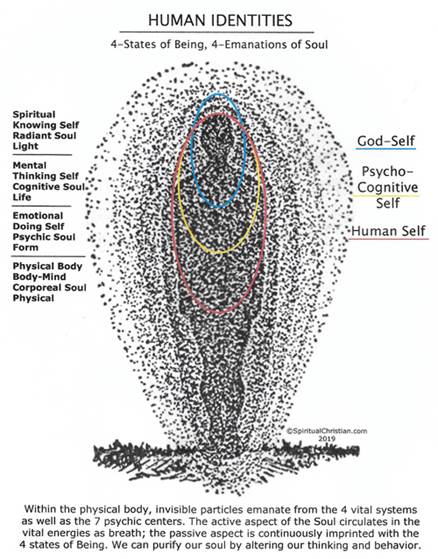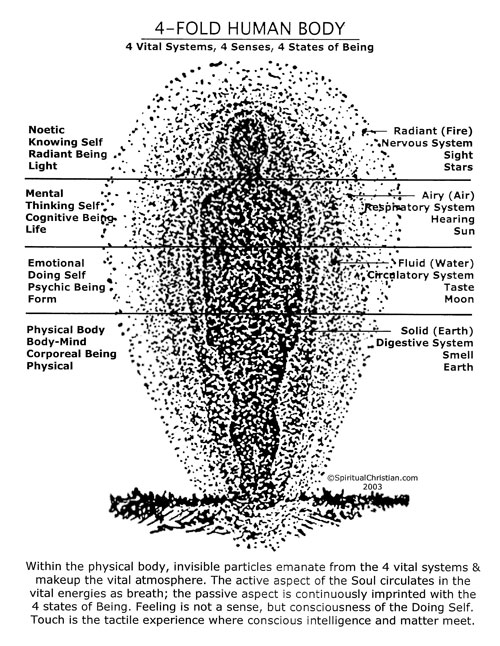Updated: 12.23.24
BASIC PRINCIPLES OF MEDITATION
The primary purpose of meditation is to become conscious of consciousness. Becoming conscious that we are conscious is something that “flies under the radar” of most people. We are all conscious, but we have no idea how it is that we are conscious because we really don’t know what consciousness is or where it comes from. These are the initial questions of ontology: what is consciousness, what is being, how is it that we are “wired” to be self-conscious? That last question is the key.
We humans are the only self-conscious beings on the planet which simply means that we are able to turn our attention back upon ourselves and reflect on who we are. Essentially, this is meditation. Serious individuals who practice meditation for the purpose of spiritual awakening will become students of ontology – the science of being. Ontology studies consciousness, the vital life of the body, the vital light of the psycho-cognitive mind and the soul/spirit of the divine-human.
This is the highest stage of meditation practice because it means rising through and mastering the energies of the physical, psychic and mental in order to become cognizant of the spiritual nature. Conscious awakening requires spiritual knowledge as well as dedication, discipline, and consistent meditation practice.

The first lesson of meditation is to become aware that consciousness can be focused – this focal point is the “light of attention.” Right now the light of “your attention” is focused on these words, but in a moment it may be focused on an itch or it may turn to notice someone walking into the room or to daydream. In other words, the point of attention is constantly shifting to whatever sight, sound, activity, or bodily sensation is most prominent in the immediate surroundings, and sometimes it turns off and becomes unconscious like in sleep.
Just about everyone keeps their attention focused outward through their senses and sensual stimulations of the body to the activities of the material world. The purpose of meditation is to “get a grip” on our attention, turn it inward and consciously connect with our “point of attention.” We strive to make the mind be still so as to focus its attention within; in other words, turning the light of attention back upon our own individual consciousness. Focused self-reflection and intuitive insight are the fruits of meditation.
The next important lesson of meditation is about the orientation of attention. Like the majority of people, individual attention is turned outward to worldly activities and this means “touching the world” with “your point of attention.” Where we touch the world, the world touches our consciousness, and in many cases, we get some of the world on our consciousness and it has an effect similar to a stain on a piece of cloth.
Most people are unaware they are touching the world or that the world is touching and imprinting their consciousness. Consequently, these unaware people are unconcerned, clueless, and exercise no discretion about where or how they direct and open their consciousness to the world; neither do they care with what impressions the world is imprinting them.
People who meditate are acutely aware of where and how they direct and orient their conscious attention in regard to the world because they have learned through their meditation experience that many of these “stains and impressions” are the source of the pain, anxiety, stress, disappointment, and delusion from which they desire to be free.
Here’s the next lesson – an important step in meditation is about “purifying” consciousness of the “worldly stains.” In meditation, when the attention stabilizes and begins to self-reflect, we become cognizant of how the unfiltered world contaminates and aggravates consciousness through anxiety, fear, worry, etc. We gradually recognize the significance of having and maintaining a clear conscience and a stable and peaceful consciousness.
SpiritualChristian.com

The physical body, the emotions, and the “rationalizing” mind of the ego-personality are IN the world. The majority of people on the planet are totally lost in the various illusions of the world and do not know it; they have no desire to separate themselves from the illusion. People who are in the illusion get very uncomfortable if they are made aware of this fact. They are attached to the things of their world; they are attached to the pleasures, possessions, and comforts of their lives; and they are attached to their ego-identity.
The problem is that in the world where there are pleasures, there is also pain in equal measure. This is the nature of the third-dimensional world in which we live – it is a world of duality: pleasure-pain, like-dislike, love-hate, right-wrong, light-darkness and so on. Next lesson – meditation helps you to withdraw from duality by finding the balance in the middle. Rather than swinging between happy or sad, you establish a “point of equilibrium” in consciousness of contentment and peace.
Many people reading this paper are stuck in the world. For these folks, consciousness has been wide open to the world and has been stained, imprinted and in some cases, contaminated or damaged from all the circumstances, people and events that have crossed their path. This is not a judgment of anyone’s life as we have all been through this dark maze, but it is an accounting of the memories, marks, and blemishes accumulated upon our consciousness. Our attachments to the world exist primarily in the two lower levels of the physical and psycho-cognitive below the diaphragm.
All of the attachments which hold us to the world are of our own making. They are like tiny invisible strands of our light attached to the objects, situations, and people who we are interested in. Consequently, people “feel” the connection to these people and things by unconsciously allowing for their life-energy to “bleed out” to these attachments. Next lesson – meditation is about gradually, patiently, and methodically severing the unnecessary attachments to the world and drawing this energy and light back into the body and personal self. This stage of meditation retrieves our light from the world, enhancing our life, awareness, and consciousness.
Beginning meditators, carefully consider what you hope to achieve from meditation whether it is peace of mind, self-confidence, devotion to the Divine, self-awareness or all of the above. Carefully thought out goals will help improve the meditation experience so as to be beneficial and meaningful on many different levels. The meditation process touched upon above is for the serious student who wants to awaken spiritually. This endeavor is a change of lifestyle as it requires months/years of personal work, improvement, and self-sacrifice; for some of us, it is a lifetime. For those who want to relax, be at peace, and feel better about themselves, without meditating, see: Just Breathe.
A Personal Experience
Meditation is a personal and private experience and it requires a deep commitment; success here is no different than with any other major accomplishment. Self-knowledge is the greatest experience to be gained in this life and there is no better way to attain this awareness than through meditation. Initially, the individual needs an effective meditation system with clear markers for progress and guidance, which is what this website has been designed to do.
In time and with adequate practice, the advanced meditative state allows one to receive intuitive knowledge/inspiration directly from the Christ-Spirit without the need for “quiet sitting.” If meditation practioners are humble and receptive to Christ through the Spirit, they will become their own teachers.
The meditation instructions on this site are transformative and will relieve stress, build self-confidence, subdue the chattering-mind, control bodily impulses, and stabilize the emotions depending on your level of expertise. Aside from achieving these basic benefits, these meditation practices will: eliminate personal fear, anxiety, and insecurity, bringing stability, courage, and calmness to the mind and heart; open consciousness to higher levels of understanding and greater awareness of self; connect the personal self to the Holy Trinity so it becomes cognizant to the guidance of Christ and the Spirit; and awaken personal consciousness to the spiritual Self. If practiced correctly, consistently and with discipline, one can experience the Kingdom of Heaven within – here and now.

Next: An Overview of Meditation
SpiritualChristian.com

*
* *

